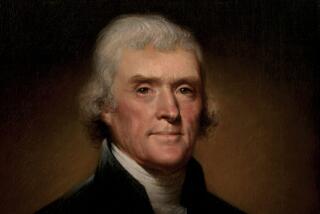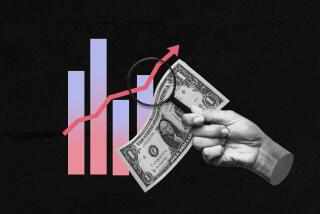Op-Ed: Wealth, not just wages, is the way to measure women’s equality
On Aug. 26, we celebrate the day in 1920 that women in the United States finally won the right to vote, a historic victory in the long march toward equal rights. Almost a century later, we still have to address the economic disparities women face in order to achieve full equality.
Today, women play an outsized role in the economy — they make up half the workforce and drive roughly 80% of consumer purchases — yet they have limited access to the fruits of their labor. It’s well known that women earn 79 cents for every dollar earned by men, but most people don’t realize that women own only 32 cents on the dollar compared with men. To get to women’s equality, we have to tackle income and wealth inequality.
Measuring wealth is a much more accurate picture of how one is doing financially than measuring wages. Wealth is a balance of assets minus debts. Several factors contribute to the wealth gap facing women. In the workforce, they make less money than men, hurting their ability to save. They’re also more likely to work part-time, often because they’re caring for family members, which limits their access to employer benefits that help turn income into wealth through 401k or other retirement savings programs. And women often can’t access federal and state tax subsidies that encourage savings and investment because of the way the subsidies are structured.
Research shows that greater economic equality contributes to a strong and growing economy.
To address these inequities, we need a broad menu of solutions that addresses income and wealth. On the income side, that means pushing for pay equity, affordable childcare and paid family leave. On the wealth side, we can start by tackling two key challenges: retirement savings and tax benefits.
Programs such as Secure Choice, under development in California, will expand women’s access to retirement accounts. When Secure Choice goes into effect, workers who currently don’t have access to a retirement program through their employer will be able to save by creating a personal account administered by the state.

Another proposal would be to make retirement benefits “portable” — tied to individuals, not employers — so independent contractors, domestic workers and other nontraditional employees can build savings over a lifetime of work.
As policymakers in Washington begin to debate tax reform this fall, they need to take into account how their proposals will affect women. For example, two-thirds of households — many of those led by working women — don’t itemize their taxes, which means they can’t take advantage of certain deductions. Instead, these households are much more likely to benefit from refundable tax credits. Expanding the Earned Income Tax Credit and the Child Tax Credit should be key priorities to make the tax code work for women.
These strategies support everyone; but they would particularly benefit low-income women and women of color, who are most affected by the women’s wealth gap.
Closing the women’s wealth gap gives families the cushion they need to weather a financial crisis and invest in their children and communities. And research shows that greater economic equality also contributes to a strong and growing economy.
The policy changes that can help close the women’s wealth gap are within reach and we will all benefit if we even the financial playing field for women.
Robert Reich was secretary of Labor under President Clinton. Heather McCulloch is founder and director of the Closing the Women’s Wealth Gap Initiative.
Follow the Opinion section on Twitter @latimesopinionand Facebook
More to Read
A cure for the common opinion
Get thought-provoking perspectives with our weekly newsletter.
You may occasionally receive promotional content from the Los Angeles Times.










